SONIC MMABOLELA – a report for fellow sound designers/recordists
When I first read about Sonic Mmabolela, I knew immediately that this was something I wanted to partake in. A two week sound recording workshop/residency held at a private game reserve in South Africa, rented out in its entirety for the sole purpose of recording and thus promising minimal outside interference – it’s a field recordist’s dream come true. And further reading of its description, plus the fact that it is organised by renowned sound artists Francisco Lopez and Barbara Ellison, promised that this was going to be thematically quite different from other recording workshops out there, which tend to focus a lot on the technical side of things.
Pictures from a previous year of Sonic MmabolelaI had many reasons to join up, but chief among them were a longing to go back to the African continent for more sound recording, and a growing interest in sound art. I was curious to learn from people who work as independent sonic artists and perhaps find a new outlet for my love of recording sounds of the natural environment and its wildlife.
All that being said, the biggest draw was simply to go out and spend two weeks of non-stop recording in the bush. If nothing else, perhaps I could gather enough material to release another African wildlife themed library. And so it happened that I found myself at the end of November of 2016 as one of the participants in that year’s Sonic Mmabolela.
No big ticket wildlife, but an abundance of freedom
From my previous African travel and recording experience, I was used to always being confined to my vehicle or camp, or using a leopard trap to leave my gear safe for extended unattended recording sessions. Wandering off into the bush with mics in tow was always absolutely out of the question, the risk of running into elephants, buffalo or other potentially dangerous mammals too high.
Sonic Mmabolela however was in that sense the complete opposite experience. The Mmabolela estate at which it was held is an expanse of just over 5000ha of dry bush veld, and while it was teeming with life there were nearly no dangerous mammals present. No elephants, no buffalo, no lions – a couple of hyenas apparently, and a lone leopard maybe. Granted, while the river was mostly dry, the bits that had water deep enough sported some humongous crocs. To tell the truth, the lack of flagship mammals made me hesitate prior to signing up, as I do love the presence and the calls of all of them. But it turned out to be a blessing in disguise. Now the bush was a relatively safe(r) place where you could walk around and explore freely – just stay away from that deep water!
It goes without saying that I am not advocating for an African bush safely removed of all potentially hazardous mammals – never would I hope for the experience of Africa’s nature to be akin to that of Europe. But for the purpose of these two weeks of non-stop recording, it was a delight to be in a place where there was so much in terms of beautiful, exotic life & sound while not having to beware much about what may be lurking in the bush.
Waiting for rain
And life there was – yet death all the same. The residency takes place during the latter weeks of November, almost summer in the Southern Hemisphere, and a time that is particularly spectacular for birdlife. The dawn choruses were the lushest and most exuberant I’ve ever experienced, compounded by the natural reverberations created by the features of the land and its vegetation.
A small selection of dawn recordings, all with a DIY SASS sporting 2 MKH8020sIt is also the end of the dry season, and every day was marked by expecting or hoping for a storm and rainfall. While rain would soak our recording plans, the local wildlife was in desperate need of it. We saw and smelled many dead antelope carcasses, perished due to the lack of water. Most of the bush was dry and unpalatable, the few tasty leaves and fruits available cruelly tucked away behind massive thorns. You could clearly sense and see the desperate struggle the animals were going through, but sadly the rains never truly came out in full force while we were there.
Out of my depth
The schedule of the residency was rammed, in a good sense: there were usually at least two 3+ hour recording slots each day, plus time set aside for studio work and discussion.
The fully packed schedule of Mmabolela 2016And through those discussions I quickly learned that Francisco Lopez, the director and conceiver of Sonic Mmabolela, is on a whole different level indeed than I am. Hearing him talk about his work, about the state of sonic arts put in context with the historic progression of comparable arts such as photography, the questions and challenges he posed, all in his quite erudite command of the English language often meant that I felt out of my depth and on new grounds. Working as a sound designer for commercial entertainment projects, I face different questions and struggles than someone who has an independent sound art practice.
Most of the other participants were independent artists and musicians in their own right. They had all presented their work at the start of the course, and I was truly impressed by a lot of it. So as a result from being surrounded by people who work professionally with audio in a whole different way than myself, I started looking at my own approach to and motivations for sound recording from new angles.
Ambivalence towards the technical and analytical
I love categorising the sounds that I hear. When I listen to or record an animal call that I have not heard before, I can spend hours going through all the various resources at my disposal to figure out what the name of the species is. It’s not something I’ve ever questioned, but one thing that stood out to me from Francisco and Barbara’s approach is that they wouldn’t care so much about naming the sounds we were exposed to.
I point this out as perhaps my love for categorisation has something to do with my work – as a sound designer who maintains a large library of sounds that are used for projects, categorising my recordings properly is a crucial element of the job. Whatever the case, it is not that their ambivalence made me question why I want to bring order to the sounds I hear and collect. I still do it and I still love it. But it did introduce me to a new, more artistic perspective on capturing and representing sounds from the natural environment.
To quote Francisco himself from one of his online essays which I highly recommend –
“My approach to nature sound environments is devoid of such analytical or explanative goals, trying to forcefully move away from a rationalization and categorization of these aural entities. The reason why I pursue this environmental perspective is not because it’s more ‘complete’ or more ‘realistic’, but rather because it promotes a perceptional shifting from recognition and differentiation of sound sources to the appreciation of the resulting sound matter. This is not a scorn of the biotic or non-biotic elements that are typically considered as components of the environment but an appraisal of other -sonic- components that are not reductible to the former. As soon as the call is in the air, it doesn’t belong to the frog that produced it anymore.”
What makes his viewpoints especially strong to me is that these come from a man with a scientific background in entomology and has worked extensively on-site in rain forests studying the behaviour of insects. These are not the words from someone rejecting knowledge, but rather promoting an expanded view on recording and interacting with the world around us.
Similarly, where I may obsess about a perfect technical recording, a typical question that would be posed in this group is what a perfect technical recording really is. That seemed so rhetorical that it made me question myself. While I still consider good recording technique paramount and I feel that to break the rules you need to master them first, I came to realise that my own baseline and fundamentals towards recording are formed by whatever my personal perspective is, and that I’ve never really stood still to put that into words.
How many recordists does it take to mic up a lightbulb?
Night times were bug times. There was a plague of what the locals called ‘Christmas bugs’, small mindless flying insects that come out in the thousands at night. We’d noticed for a few nights in a row how the lightbulb that lit the porch of one of our buildings would attract a disgusting amount of the friendly buzzers, crawling and flying all over the place, turning the area into a feeding frenzy for scorpions, spiders, big beetles and other insect hunters.
One afternoon, four of us decided to wire up the lamp with as many microphones we could muster, in anticipation for another insect bonanza. We ended up cramming nine mics as close as we could to the light source. The below is a mix down of six of these mics, four of my own and two by composer, musician & recordist Angélica Castelló.
Two LOM Usi miniature omnis were hung on a coathanger sideways as close to the bulb as possible. Then a pair of Trance Audio Stereo Inducers was taped onto the lamp shade. Just below the bulb, two of Angélica’s Neumann cardioid mics were hung. Then all was fed into my Zoom F8.
Listening as a skill
One theme that kept coming up was the skill of listening. It was discussed at length and put into practice during regular sessions that were dubbed as concerts. The idea of these concerts was quite simple: we would take a bunch of chairs, drive to a nice location somewhere in the bush, sit down for an hour or so and listen. No talking, no doing something in particular apart from the very act of listening. We were also encouraged to not record during these concerts. I did struggle with abstaining from recording, for fear of missing out on ‘some moment’ which I would regret not capturing. But this was exactly the point – to just be there and leave your ears and mind unfiltered from the analysis and mental activity that engages when you’re in recording mode.
Getting ready for another concertAs easy as sitting down for an hour sounds, I found these listening sessions quite challenging. I eventually came to the conclusion that I haven’t got a very well developed skill to ‘just listen’, as in an almost meditative state. I found I am unable to switch my brain off, to stop processing what I am hearing in the ways I always do – to contextualise and analyse all the incoming aural information. I would either sit and focus intensely on the sounds, or I would let my mind wander off to someplace else, feeling like I was not listening any longer. There seemed to be no real middle ground possible where I felt I could transcend cerebral activity whilst still listening in a meaningful way.
All the same, I did feel I picked up valuable nuggets of analysis from those listening sessions. I would focus for instance on how wind moves through the trees, and how localised this can sound per tree rather than necessarily being one smooth flowing movement in a 360 degree fashion. Or I would deepen my appreciation for how wildlife calls enter the space often in a sudden and almost jarring way, going silent again without fanfare, in which I believe lies a valuable tool and lesson for sound design and compositional work.
Producing work out of the recordings
As a field recording and sonic arts residency, one of the objectives was to produce a piece of work using recordings made during Sonic Mmabolela, and to present to the group by the end of the two week period. There was no directive or format set in stone towards this, apart from the work being no longer than 10 minutes maximum. One could choose to simply present a recording, perhaps create a composition of some kind or even do a live performance – it was open to your own interpretation.
I intended to simply present a recording, but found motivation in the inebriation that came with the penultimate night of the workshop, in which we all relaxed and let the wine flow more freely than the nights before. While I have produced a couple of sound installations for art exhibitions in the past and have a decade of professional experience as a sound designer, I had never before set out to use my field recordings to make a piece of music.
The below is what I composed that night at Sonic Mmabolela, and consists solely of recordings captured during the workshop. I processed the material in various ways, but no external content was added. It’s also not been edited, remastered or touched up since.
What’s more, all the pieces produced by the other participants, which contained many very interesting approaches, are collected in a free downloadable release on the Free Music Archive here. I highly recommend having a listen to the full thing.
Further releases
During the workshop I became close to one of the participants, George Vlad, who I already knew from Twitter and who was the only other game audio designer that took part. As such we naturally gravitated towards each other. We also had very similar equipment, both sporting a Sennheiser Double Mid-Side surround setup, amongst other rigs.
Click here for gear
You made it this far with just a word or two on gear!? Or did you just scroll down to find a gear checklist…? Either way, here it is, without further ado:
– Double Mid-Side surround rig consisting of Sennheiser MKH8040 x2 + MKH30, in a Cinela windshield
– DIY SASS-enclosure for immersive stereo ambiences using a pair of Sennheiser MKH8020’s
– Pair of JrF Hydrophones
– Telinga Universal MK2 parabola
– Pair of DPA 4060’s
– Pair of LOM Usi’s
– Trance Audio Stereo Inducer
– Sony D100
– Sound Devices USBPre2
– Zoom F8

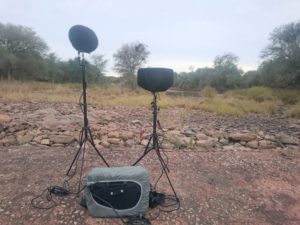
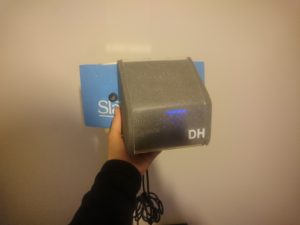
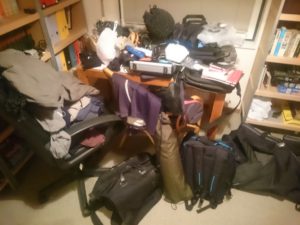
Besides, George and I found we had similar goals: we both intended to release a sound effects library of Southern African ambiences after the residency would end. It was therefore a logical conclusion that we should combine forces and collaborate, and this lead to the creation of two quite different libraries of content recorded during our time there.
A few weeks after returning from Sonic Mmabolela, we released a collection of sounds of one of the Landcruisers that were used to get around the Mmabolela reserve. This was a fun and quick library to put together. Since then, we spent roughly three months working on another collection, a much bigger library consisting of 5.5 hours of savanna ambience recordings, recorded and presented in both stereo and 5.1 surround, entitled Southern African Ambience.
The inevitable conclusion
This all leads to the inevitable conclusion: if you are a sound recordist, designer, artist or composer, I can most thoroughly recommend you consider signing up for Sonic Mmabolela yourself. If two weeks of undisturbed recording, productivity and sound-related discussion is not enough to convince you, then I should also mention that every night you’re presented with most excellent food prepared by master chef Neil Lowe. I am not on kickbacks, and I don’t have a discount code. But do yourself a favour, and sign up that form – I strongly doubt you would regret it.


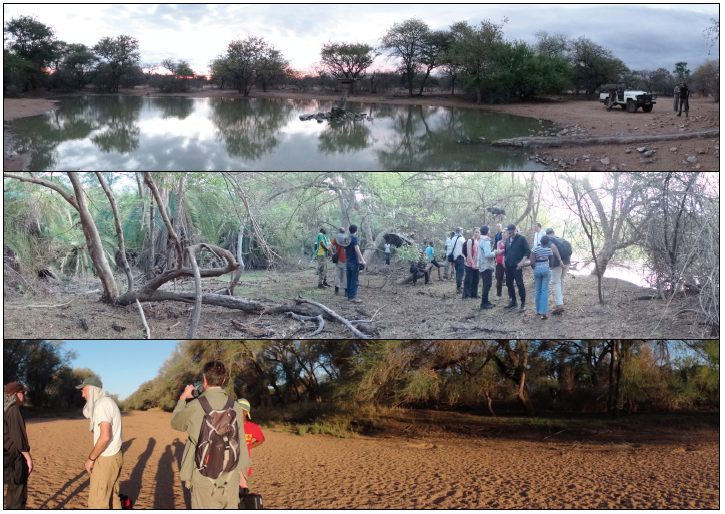

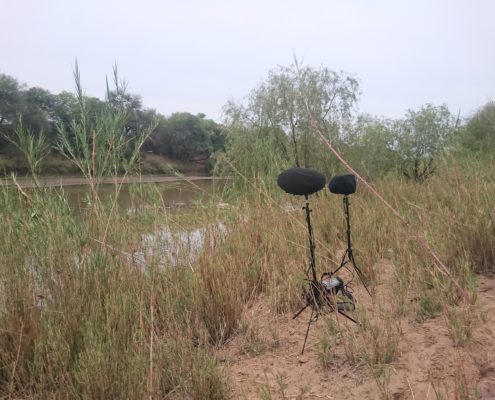
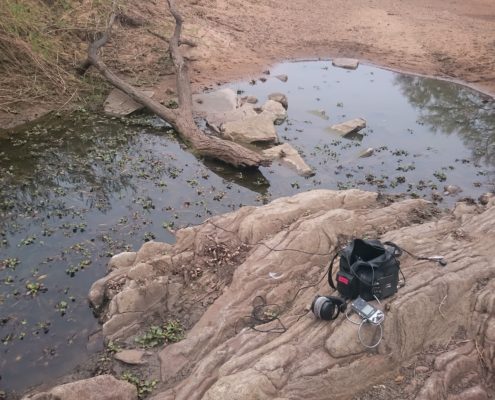
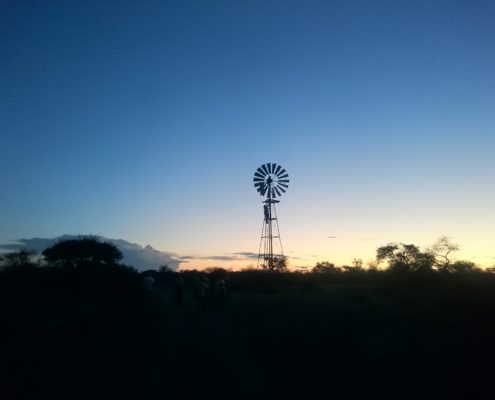
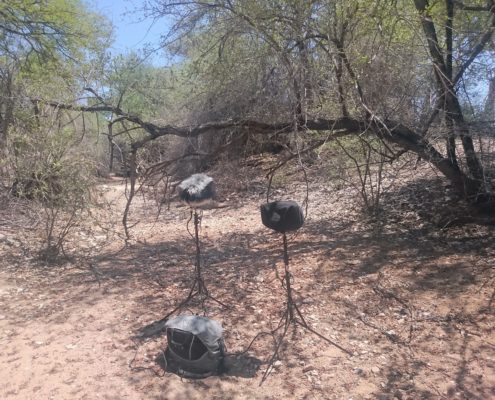
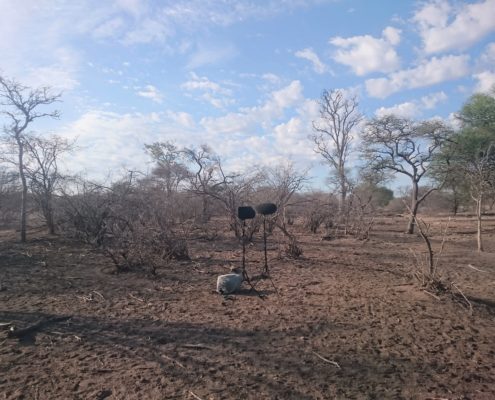
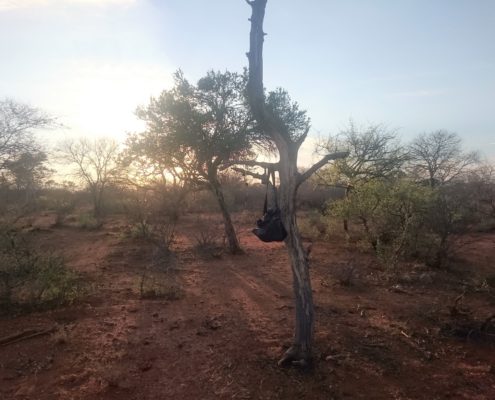


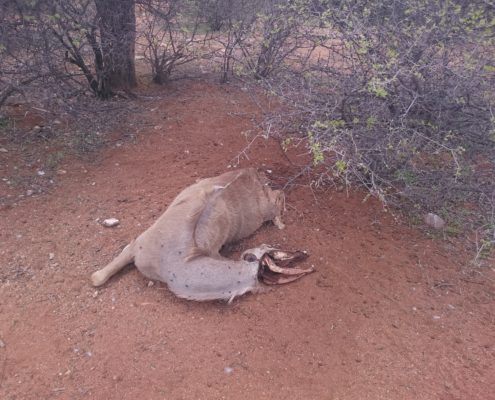
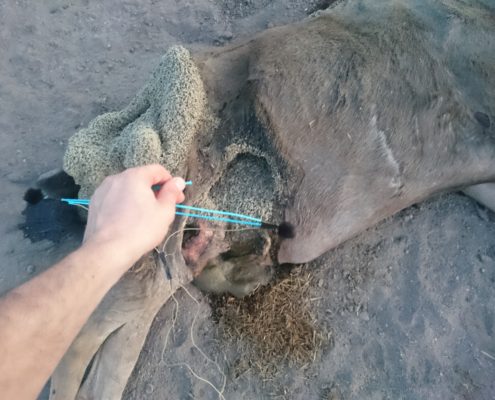
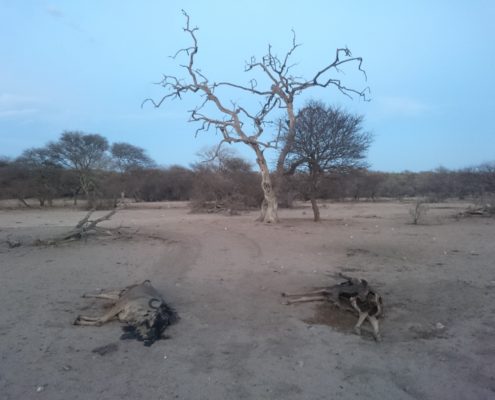
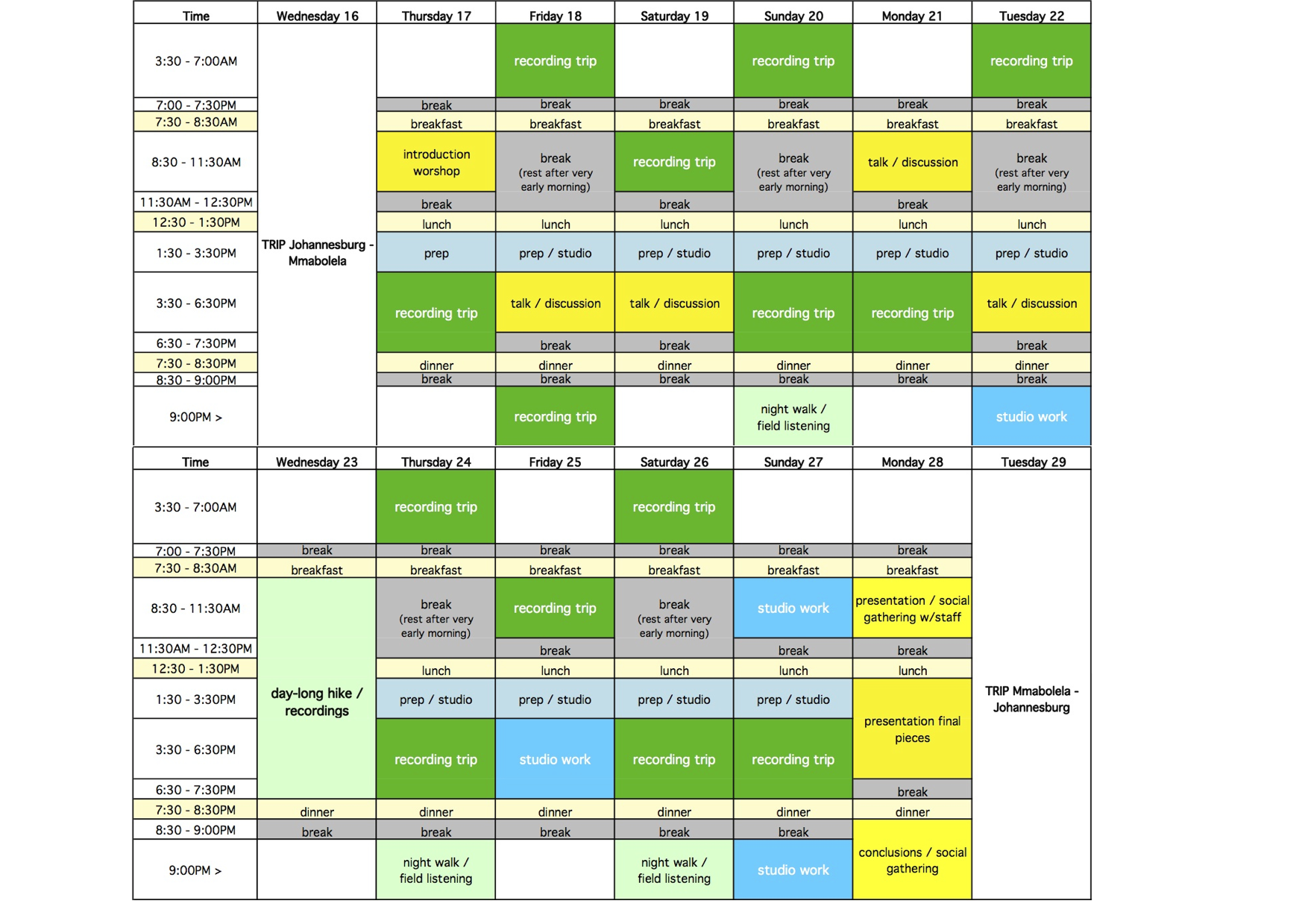
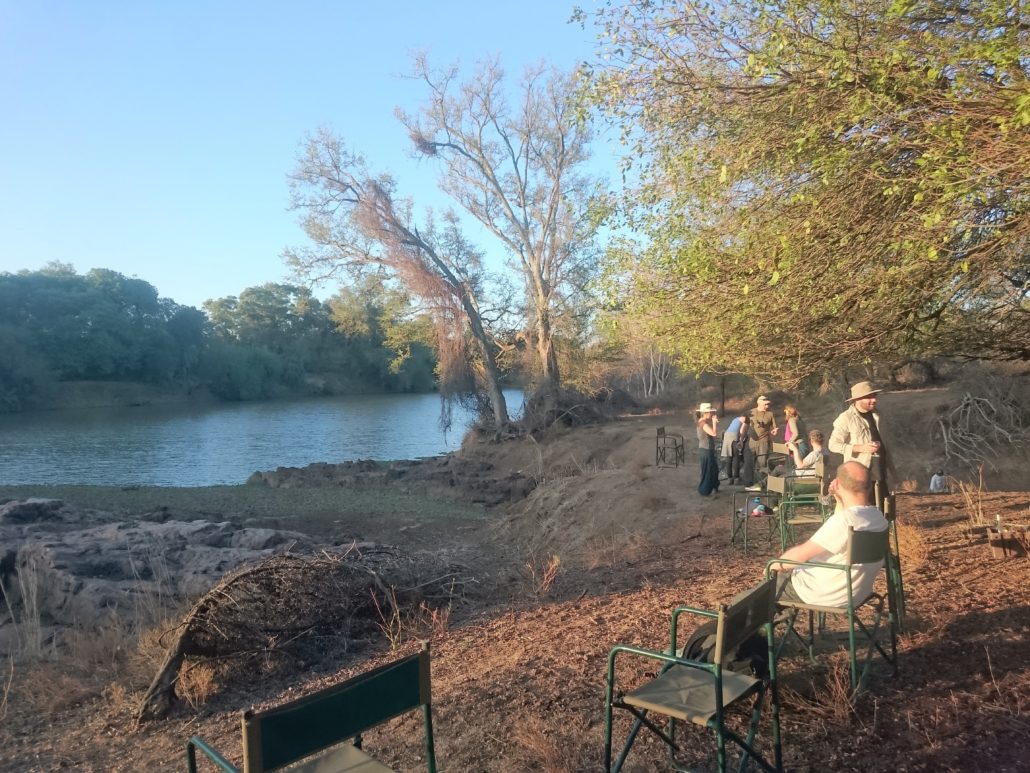

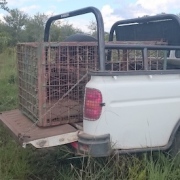


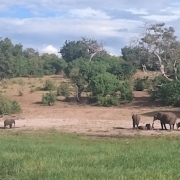

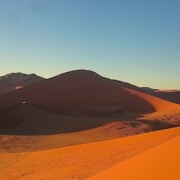
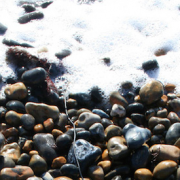
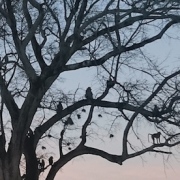


Despite not being a sound designer, and not quite getting some of the technical details, I found that fascinating, thanks for writing it up!
Thanks Edwin, that’s cool to hear!
I’ve stayed 2 years in the bush in Tanzania, but sadly back in 1988 I had no recording gear! These are the most awesome recordings I’ve heard from this fantastic continent, great work!
Stein, Tromsø, Norway
Thank you, Stein!